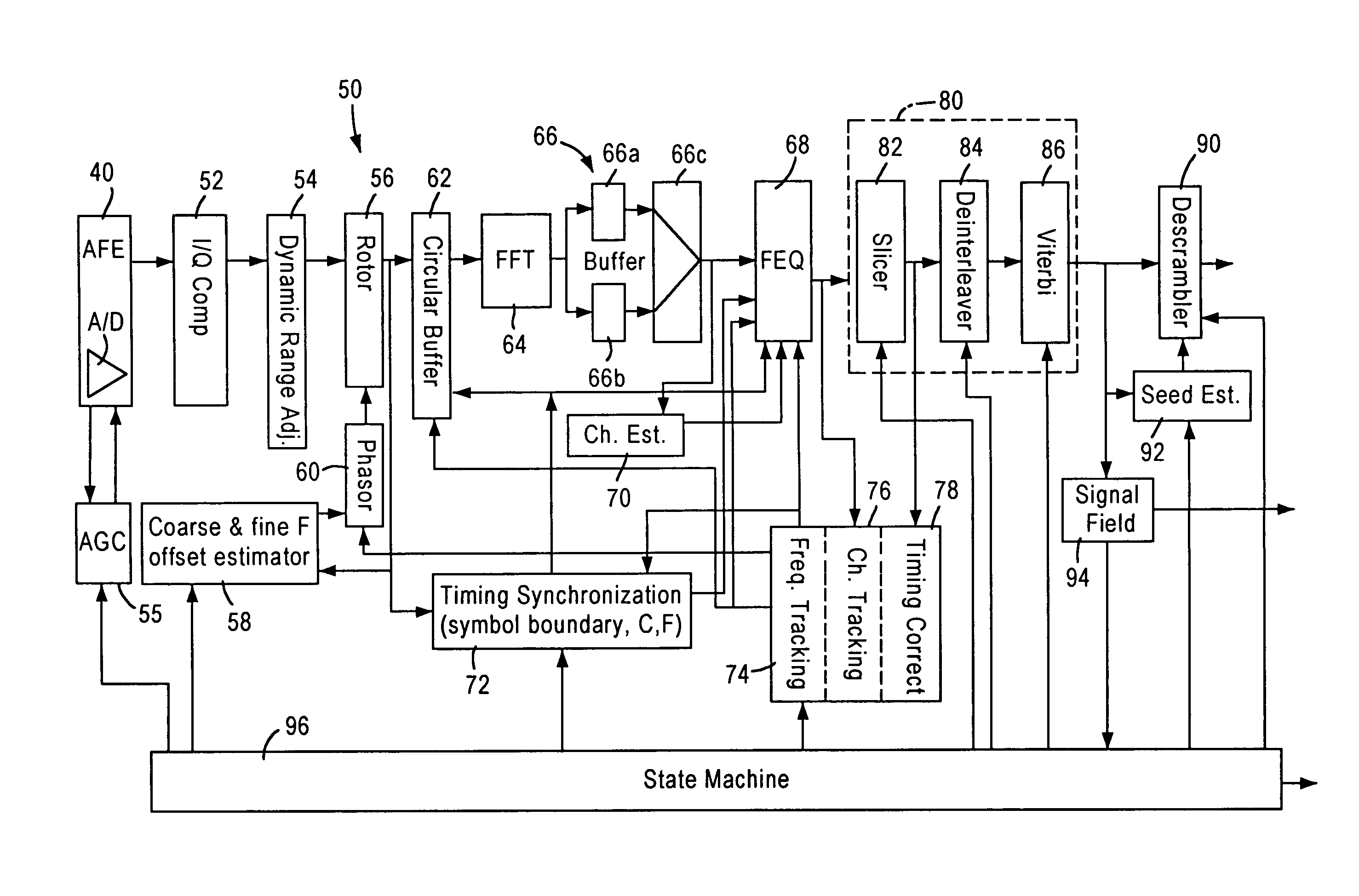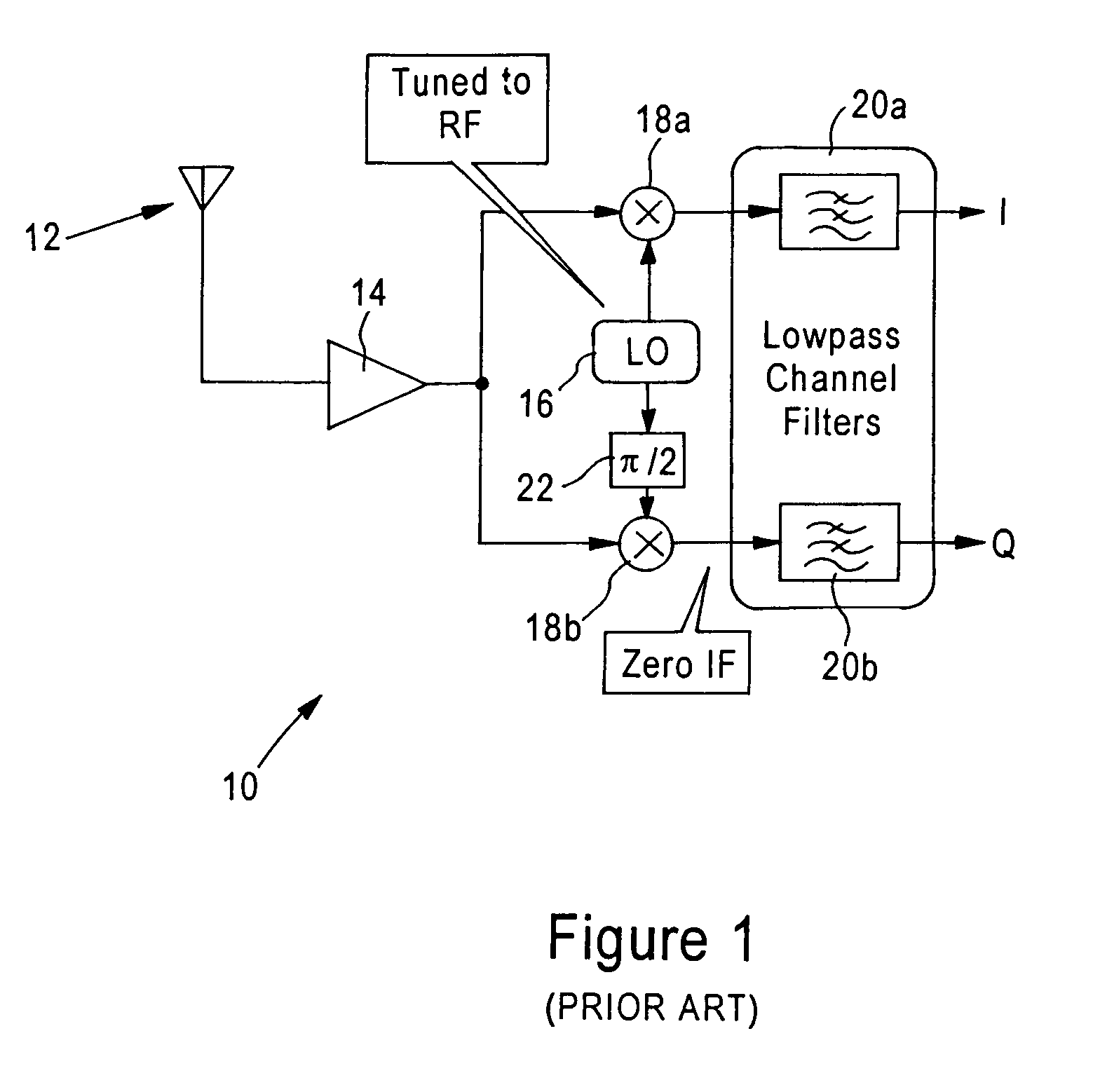Frequency domain estimation of IQ imbalance in a wireless OFDM direct conversion receiver using loopback connection
a direct conversion receiver and frequency domain technology, applied in the field of frequency domain estimation of amplitude and phase imbalance in wireless direction conversion receivers, can solve the problems of only valid and accurate analysis of imbalances in direct conversion receiver architecture, cost, device size, etc., and achieve accurate estimation of amplitude and phase imbalances.
- Summary
- Abstract
- Description
- Claims
- Application Information
AI Technical Summary
Benefits of technology
Problems solved by technology
Method used
Image
Examples
Embodiment Construction
[0029]The disclosed embodiment will be described with reference to an overview of an IEEE 802.11 OFDM transceiver, followed by a detailed description of the I / Q compensation module implemented according to an embodiment of the present invention.
Receiver Architecture Overview
[0030]FIG. 2 is a diagram illustrating an architecture of a receiver module 50 of an IEEE 802.11 Orthogonal Frequency Division Multiplexing (OFDM) transceiver, according to an embodiment of the present invention. The receiver module 50, implemented as a digital circuit, includes an I / Q mismatch compensation module 52 that receives detected wireless signal samples (in digital form) from an R / F analog front end (AFE) amplifier 40 having an analog to digital (A / D) converter. The gain of the AFE amplifier 40 is controlled by an AGC module 55. The detected wireless signal samples include an I component and Q component: these I and Q components, which ideally should be orthogonal to each other and have a uniform relati...
PUM
 Login to View More
Login to View More Abstract
Description
Claims
Application Information
 Login to View More
Login to View More - R&D
- Intellectual Property
- Life Sciences
- Materials
- Tech Scout
- Unparalleled Data Quality
- Higher Quality Content
- 60% Fewer Hallucinations
Browse by: Latest US Patents, China's latest patents, Technical Efficacy Thesaurus, Application Domain, Technology Topic, Popular Technical Reports.
© 2025 PatSnap. All rights reserved.Legal|Privacy policy|Modern Slavery Act Transparency Statement|Sitemap|About US| Contact US: help@patsnap.com



